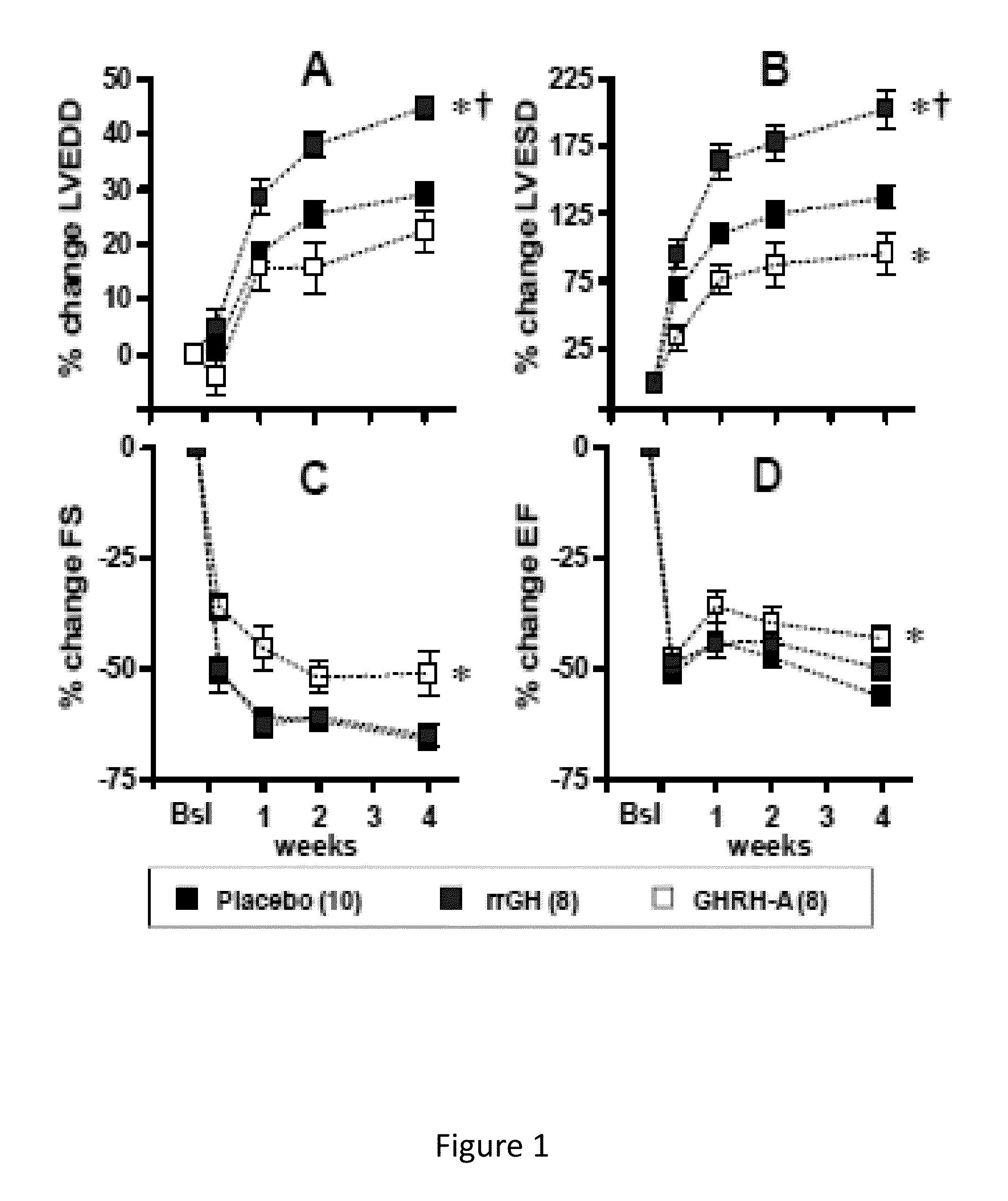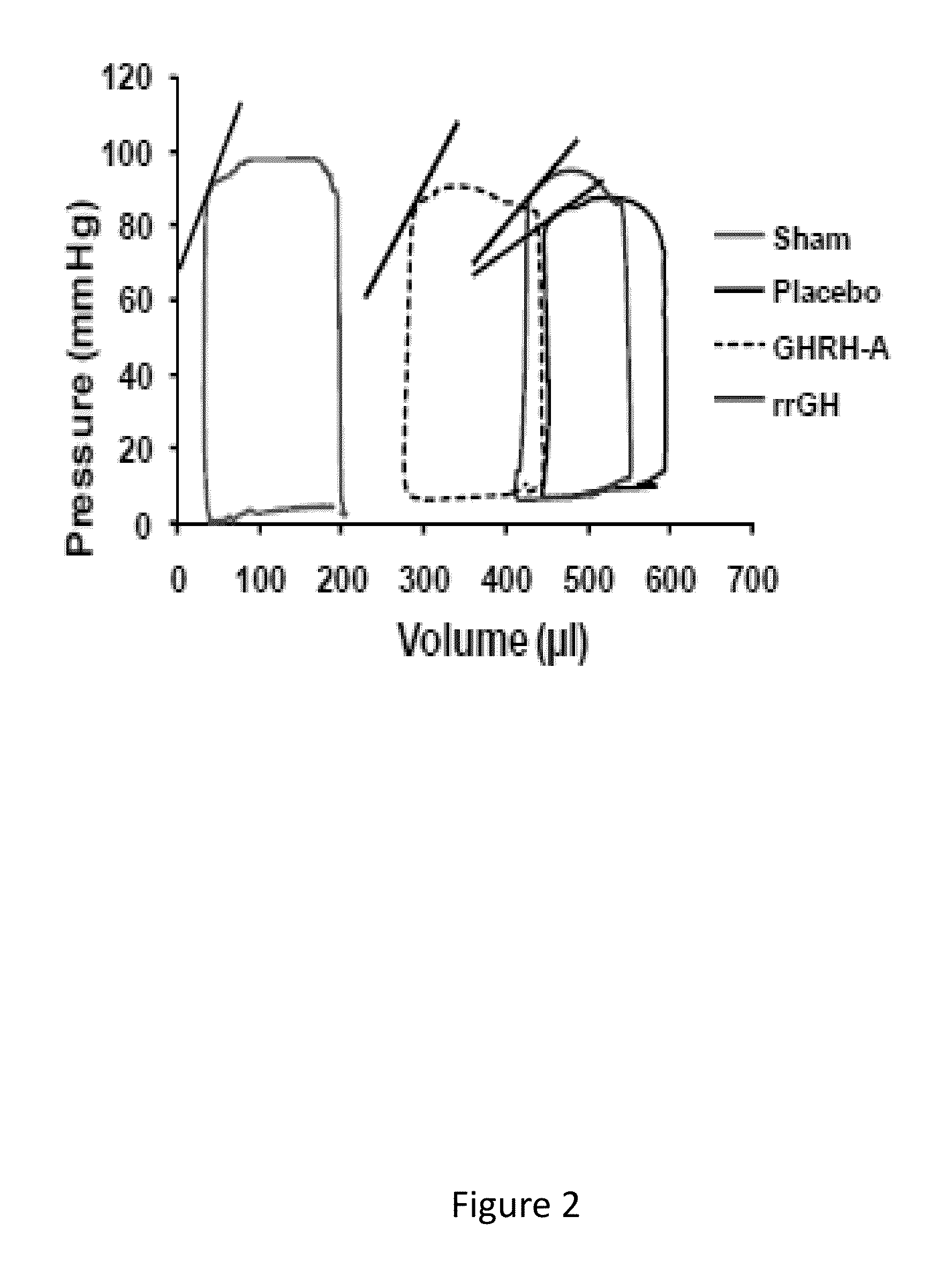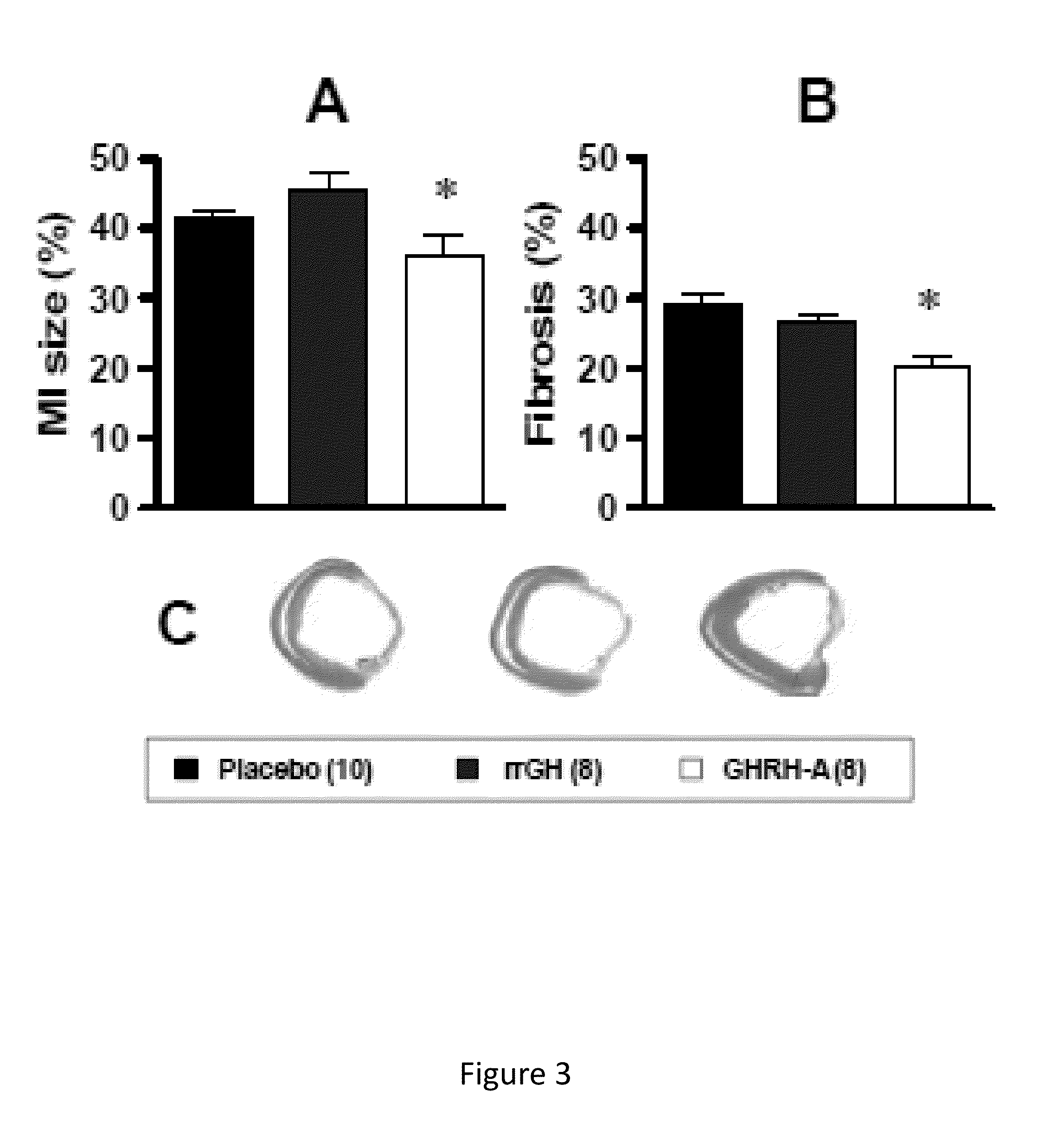Cardioprotective effects of GHRH agonists
a technology of agonists and agonists, which is applied in the direction of antinoxious agents, drug compositions, peptides/protein ingredients, etc., can solve the problems of high possibility of unexpected side effects, high potential serious disadvantages, and inability to fully reverse heart failure and/or left ventricular dysfunction. fully, to achieve the effect of improving cardiac function, improving cardiac structure and function, and reducing the size of the infar
- Summary
- Abstract
- Description
- Claims
- Application Information
AI Technical Summary
Benefits of technology
Problems solved by technology
Method used
Image
Examples
Embodiment Construction
Material and Methods
[0027]MI induced by coronary artery ligation was performed in female 6-month-old Fisher-344 rats as described previously (40). Animals were randomly assigned to receive placebo, GHRH-agonist (GHRH-A [JI-38], 50 μg / kg) or rat recombinant GH (rrGH, 0.5 mg / kg) starting 2 hours post-surgery. All treatment was given subcutaneously twice daily for 4 weeks. The Institutional Animal Care and Use committee of University of Miami approved all protocols and experimental procedures.
Drugs
[0028]Rat recombinant GH (rrGH) was supplied by Dr. A. F. Parlow from National Hormone and Pituitary Program (NHPP) (UCLA-Harbor, Torrance, Calif.) and GHRH-A (JI-38) ([Dat1, Gln8, Orn12,21, Abu15, Nle27, Asp28, Agm29]hGH-RH(1-29)NH2, the non-coded amino acids are abbreviated as follows: Dat: desaminotyrosine, Orn: ornithine, Abu: aminobutyric acid, Nle: norleucine, Agm: agmatine) was made in the laboratory of one of us (AVS) (12, 13).
Results
[0029]As depicted in Fig. S1A, baseline...
PUM
| Property | Measurement | Unit |
|---|---|---|
| Time | aaaaa | aaaaa |
| Volume | aaaaa | aaaaa |
| Volume | aaaaa | aaaaa |
Abstract
Description
Claims
Application Information
 Login to View More
Login to View More - R&D
- Intellectual Property
- Life Sciences
- Materials
- Tech Scout
- Unparalleled Data Quality
- Higher Quality Content
- 60% Fewer Hallucinations
Browse by: Latest US Patents, China's latest patents, Technical Efficacy Thesaurus, Application Domain, Technology Topic, Popular Technical Reports.
© 2025 PatSnap. All rights reserved.Legal|Privacy policy|Modern Slavery Act Transparency Statement|Sitemap|About US| Contact US: help@patsnap.com



